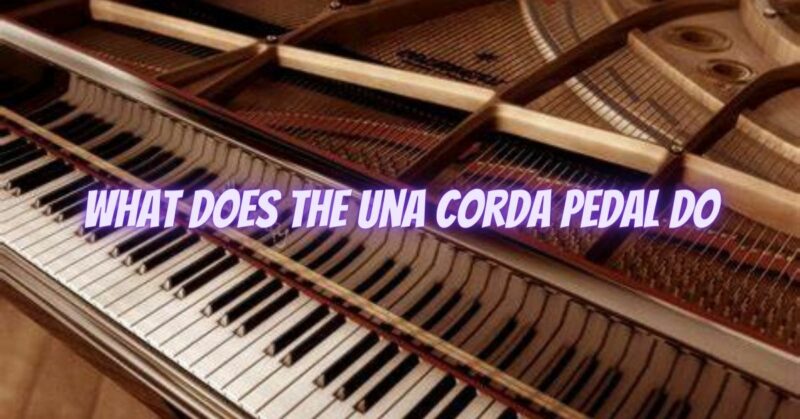Among the trio of pedals on a piano, the una corda pedal holds a unique place, offering pianists a means to explore delicate and nuanced tonal transformations. Also known as the soft pedal, the una corda pedal is a powerful tool that allows pianists to add depth and expression to their performances. In this article, we will explore the function and significance of the una corda pedal, uncovering its remarkable capabilities on the piano.
Understanding the Una Corda Pedal:
The una corda pedal, typically found on the left side of a piano, is operated by the pianist’s left foot. Its name, meaning “one string” in Italian, refers to the traditional design of the pedal, which originally shifted the action to strike only one of the three strings associated with each key. However, modern pianos employ different mechanisms to achieve the desired effect.
Tonal Alteration and Dynamic Variation:
The primary function of the una corda pedal is to subtly alter the tonal character and dynamic range of the piano. When engaged, the pedal shifts the entire piano action to the right, changing the alignment of the hammers. This adjustment results in the hammers striking the strings in a way that produces a softer and more intimate sound, often associated with a gentle and hushed quality.
Benefits of the Una Corda Pedal:
- Dynamic Control: The una corda pedal provides pianists with enhanced dynamic control. By shifting the hammers’ position, the pedal reduces the force with which the hammers strike the strings. This reduction in force allows for delicate and controlled dynamics, enabling pianists to explore pianissimo passages and create intimate musical moments.
- Tone Color: Beyond dynamic variation, the una corda pedal offers a distinctive change in tone color. By altering the number of strings struck, usually from three to two, or in some cases, from two to one, the pedal produces a subtle timbral alteration. The resulting sound can evoke a softer, more veiled, or ethereal quality, providing opportunities for artistic interpretation and expression.
Artistic Interpretation and Expression:
The una corda pedal empowers pianists to infuse their performances with a unique sonic character, adding depth and emotion to their interpretations. Through skillful use of the pedal, pianists can:
- Create Subtle Contrasts: The una corda pedal allows pianists to shape phrases and sections with contrasting tonal qualities. By selectively engaging or releasing the pedal, they can seamlessly transition between different sound textures, adding expressive nuances to their musical interpretations.
- Craft Intimate Atmospheres: The soft and delicate nature of the una corda pedal enables pianists to create intimate and introspective musical moments. It is particularly effective in conveying vulnerability, introspection, and poetic sensitivity in various genres and musical styles.
- Enhance Articulation: While the una corda pedal primarily affects volume and tone color, its usage can also impact articulation. By modifying the hammers’ striking position, the pedal may subtly affect the attack and release of the keys, enabling pianists to shape individual notes or phrases with precision and clarity.
Conclusion:
The una corda pedal, or soft pedal, is a remarkable feature of the piano that allows pianists to explore delicate tonal transformations and dynamic control. Through subtle shifts in hammer positioning, the pedal provides opportunities for nuanced expression, adding depth and texture to performances. Mastering the art of una corda pedal technique enables pianists to unlock a world of subtlety and sensitivity, elevating their musical interpretations and captivating audiences with their expressive artistry.


